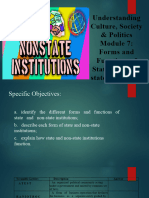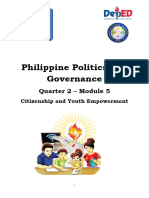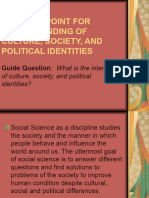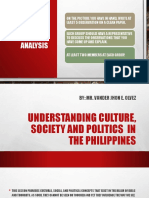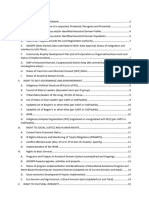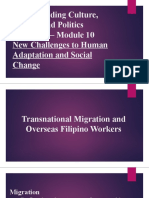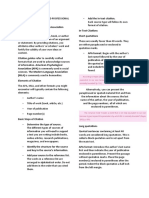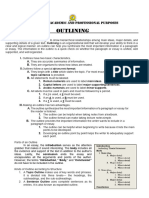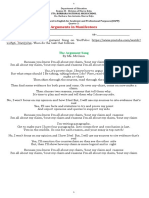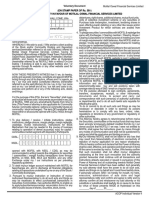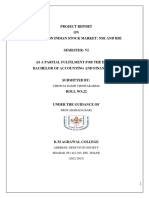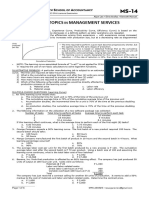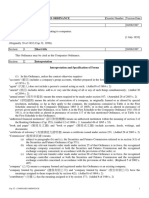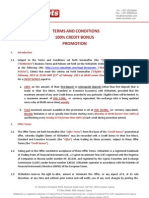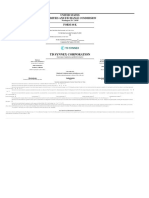0% found this document useful (0 votes)
299 views37 pagesForms and Functions of State and Non-State
Forms and functions of state and non-state institutions can be summarized as follows:
1) States are organized political communities with governments that employ rule of law, while non-state institutions include banks, corporations, and cooperatives that participate internationally without affiliating with any single state.
2) Major forms of government include authoritarian (e.g. monarchy), oligarchic, and democratic, while roles of states include providing security, rights, and socioeconomic development.
3) Non-state institutions like banks provide financial services, corporations operate for profit or not-for-profit, and cooperatives are people-centered enterprises that realize members' economic and social needs.
Uploaded by
april rancesCopyright
© © All Rights Reserved
We take content rights seriously. If you suspect this is your content, claim it here.
Available Formats
Download as PPTX, PDF, TXT or read online on Scribd
0% found this document useful (0 votes)
299 views37 pagesForms and Functions of State and Non-State
Forms and functions of state and non-state institutions can be summarized as follows:
1) States are organized political communities with governments that employ rule of law, while non-state institutions include banks, corporations, and cooperatives that participate internationally without affiliating with any single state.
2) Major forms of government include authoritarian (e.g. monarchy), oligarchic, and democratic, while roles of states include providing security, rights, and socioeconomic development.
3) Non-state institutions like banks provide financial services, corporations operate for profit or not-for-profit, and cooperatives are people-centered enterprises that realize members' economic and social needs.
Uploaded by
april rancesCopyright
© © All Rights Reserved
We take content rights seriously. If you suspect this is your content, claim it here.
Available Formats
Download as PPTX, PDF, TXT or read online on Scribd
/ 37

